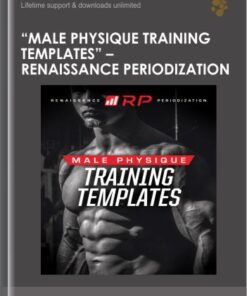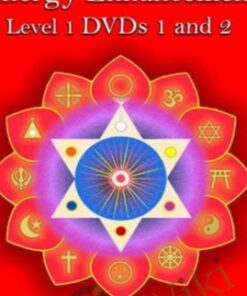Freeing the Shoulders and Arms – Anatomy Trains
Question and Answer
What is https://archive.is/2wl1K Buy?
https://archive.is/2wl1K Buy is Archive: now $50 $174.95, Freeing the Shoulders and Arms - Anatomy Trains Course..
How does https://archive.is/2wl1K Buy Archive:?
Archive: https://archive.is/2wl1K Buy now $50 $174.95, Freeing the Shoulders and Arms - Anatomy Trains Course.
What is the Shoulders and Arms7 CEs NCBTMBThis?
the Shoulders and Arms7 CEs NCBTMBThis is Freeing program explains the anatomy of the shoulders and arms, provides four client mini sessions with BodyReading (visual assessment), strategy and techniques, and demonstrates techniques for the muscles that surround the shoulders, arms, and hands, presented by Anatomy Trains author, Tom Myers..
How does the Shoulders and Arms7 CEs NCBTMBThis Freeing?
Freeing the Shoulders and Arms7 CEs NCBTMBThis program explains the anatomy of the shoulders and arms, provides four client mini sessions with BodyReading (visual assessment), strategy and techniques, and demonstrates techniques for the muscles that surround the shoulders, arms, and hands, presented by Anatomy Trains author, Tom Myers.
What is the muscles?
the muscles is Review involved in the balance of the shoulder girdle on top of the rib cage, and gain an understanding of the anatomy of the shoulder girdle and arms through the Anatomy Trains Arm lines.In this computer age, the arms get unique usage, requiring a complex equation of stability versus mobility to balance correctly on the rib cage, the shoulders can easily be used to compensate for thoracic and cervical deviations or be the cause for them..
How does the muscles Review?
Review the muscles involved in the balance of the shoulder girdle on top of the rib cage, and gain an understanding of the anatomy of the shoulder girdle and arms through the Anatomy Trains Arm lines.In this computer age, the arms get unique usage, requiring a complex equation of stability versus mobility to balance correctly on the rib cage, the shoulders can easily be used to compensate for thoracic and cervical deviations or be the cause for them.
What is the arms?
the arms is This can lead to issues traveling down into and hands, up into the neck and jaw or even into the spine and rib cage.Students will learn to recognize ‘ideal’ and compensated patterns and how to tie them into the story of the rest of the body..
How does the arms can lead?
This can lead to issues traveling down into the arms and hands, up into the neck and jaw or even into the spine and rib cage.Students will learn to recognize ‘ideal’ and compensated patterns and how to tie them into the story of the rest of the body.
What is You?
You is will be able to really ‘see’ what work needs to be done to create lasting results for this area.Watch clips from Freeing the Shoulders and Arms:By participating in this online course you will be guided through a relevant anatomy lecture, BodyReading strategies, manual therapy techniques, and then test yourself through the online quiz for CE credits upon completion..
How does You will be?
You will be able to really ‘see’ what work needs to be done to create lasting results for this area.Watch clips from Freeing the Shoulders and Arms:By participating in this online course you will be guided through a relevant anatomy lecture, BodyReading strategies, manual therapy techniques, and then test yourself through the online quiz for CE credits upon completion.
What is Participants?
Participants is will be able to: Name the major functions of the shoulder girdleGroup the muscles in the rotator cuffDescribe the bones, joints, and major ligaments of the shoulders and armsUnderstand and use postural assessment terms of the scapula and scapular xDemonstrate palpatory certainty on the various musclesPerform the various techniques for fascial and myofascial release for each of the muscles.
How does Participants will be?
Participants will be able to: Name the major functions of the shoulder girdleGroup the muscles in the rotator cuffDescribe the bones, joints, and major ligaments of the shoulders and armsUnderstand and use postural assessment terms of the scapula and scapular xDemonstrate palpatory certainty on the various musclesPerform the various techniques for fascial and myofascial release for each of the muscles
 "Male Physique Training Templates" - Renaissance Periodization
1 × $42.00
"Male Physique Training Templates" - Renaissance Periodization
1 × $42.00 10x Launches - Copy hacker - Ry Schwartz
1 × $92.00
10x Launches - Copy hacker - Ry Schwartz
1 × $92.00 CDT Dental Coding and Reimbursement Update: Identifying Common Practice Mistakes - Paul Bornstein
1 × $85.00
CDT Dental Coding and Reimbursement Update: Identifying Common Practice Mistakes - Paul Bornstein
1 × $85.00 Energy Enhancement Course : Sacred Dance
1 × $25.00
Energy Enhancement Course : Sacred Dance
1 × $25.00 10-Minute Spiritual Vortex Clearing - Michael Davis Golzmane
$10.00
10-Minute Spiritual Vortex Clearing - Michael Davis Golzmane
$10.00 'Quantum' Chakra Clearing and Balancing Series - Jonette Crowley
'Quantum' Chakra Clearing and Balancing Series - Jonette Crowley
 "Is Your Soul Allowing You To Heal?" -- All 7 Recordings in the Series (6 Hours of Audio Clearings)
"Is Your Soul Allowing You To Heal?" -- All 7 Recordings in the Series (6 Hours of Audio Clearings)
 10 Activities to Enhance Social-Emotional Literacy in the Classroom: Transform Student Behavior from Chaos to Calm - Lynne Kenney
10 Activities to Enhance Social-Emotional Literacy in the Classroom: Transform Student Behavior from Chaos to Calm - Lynne Kenney
 1-2-3 Magic: 3-Step Discipline for Calm, Effective and Happy Parenting - Thomas W. Phelan
1-2-3 Magic: 3-Step Discipline for Calm, Effective and Happy Parenting - Thomas W. Phelan